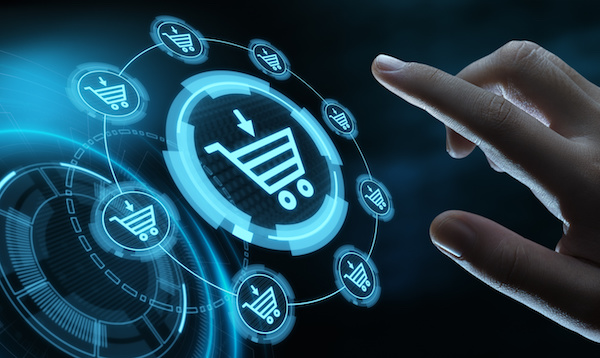When the COVID-19 pandemic first began, consumers flocked online to grab hold of the products they needed to avoid going into stores. This sparked a record influx of global retail activity. Now, over a year later, our spending behaviours haven’t changed much, with many consumers still preferring to purchase their favourite products and services online. While conversion rates for your business can increase with the right digital marketing tools working to bring traffic to your website, the same thing goes for social pages. But is it worth investing more time and money into your social strategy if you don’t know if customers are shopping directly from your social media platforms?
How do you do your online shopping?
Since Amazon and eBay first launched sitewide online shopping in 1995, consumers have been hooked on the convenience of front door delivery. However, with the rise of social media over this last decade, there are now more ways than ever to find and buy innovative products through the use of your social channels. Aside from targeting your ideal audience on their preferred platform of choice, there’s also a generational breakdown of purchasing patterns that influence the likelihood of your ideal customer buying directly from your social platforms.
- Generation Z (Born 1997 to 2012): Being the most technologically influenced generation, Gen Z’ers are strongly influenced by social media and are very comfortable purchasing from channels like Snapchat, YouTube, and Instagram shopping.
- Millennials (Born 1981 to 1996): While this generation has also grown up with the power of the internet at their fingertips, for them to feel confident in making a purchase, social selling needs to be more persuasive. This is where investment in your digital strategy is crucial!
- Generation X (Born 1965 to 1980): Although this generation isn’t as digitally savvy as their predecessors, they are common online spenders. While it may take them a little longer to complete a purchase due to the desire to test out the products in person, they are on social media and can be more easily eluded through the use of email marketing.
- Boomers (1946 to 1964): This price-conscious and fiscally conservative generation is starting to come around to the concept of online shopping. However, they still prefer to browse for new products and aren’t as comfortable achieving purchase confidence through online means like reviews and blogs. So, while social selling might be a tougher call on these consumers, many are coming around to Facebook and will click through and log your website for a later purchase.
Which social media platforms are consumers most likely to shop on?
Consumers who are comfortable with social shopping have endless choices for purchasing platforms. Needless to say, some are more popular than others.
- Facebook: As one of the leading social media channels bridging generational gaps, Facebook is also one of the most common social shopping platforms, with opportunities for businesses to grab the attention of an audience from Gen Z to Boomers. While Facebook Marketplace has quickly become the new craigslist in terms of commerce, there is a “shop” feature available on business pages where the owner can import products and make them available for purchase directly from Facebook’s checkout page.
- Instagram: Even though Instagram shopping is newer than the purchasing features on Facebook, it’s a booming online marketplace for business owners to find new customers. As a visual and auditory-based social platform, Instagram shopping is an exciting new experience and once the consumer commits and orders their products, they can choose to do a shoutout to your brand as well. With the ability to tag on posts and stories, the possibility for creative content is endless with Instagram shopping.
- Pinterest: While this platform doesn’t allow respondents to make purchases directly from the pinned products or elaborate vision boards, its browser allows users to seamlessly switch between the website/app to make a quick purchase from the business, which doesn’t disrupt the social media experience. So, while you aren’t buying this on Pinterest’s servers, consumers can still stock up on an assortment of ideas that inspire them.
Where should you be selling?
We wish it were as easy as recommending a single tactic for all e-commerce businesses across the board. Nevertheless, there is no one-size-fits-all suggestion for a successful social shopping strategy. What we can suggest is that you start by prioritizing social media shopping tactics on the platforms you currently possess a following on and build your strategy from there.
To learn more about where your target social media audience might be, contact one of Trek Marketing’s Client Success Managers for a free consultation.
Do you have any questions about getting Pinterest, Facebook, or Instagram shopping started? Drop a comment below to let us know.
Alex Wilks has been working as a copywriter and digital marketing strategist since 2018, with added specialties in social media and email marketing. With a Bachelor’s Degree in Journalism and Communication, she is a natural content writer with the ability to connect well with her target audience.









